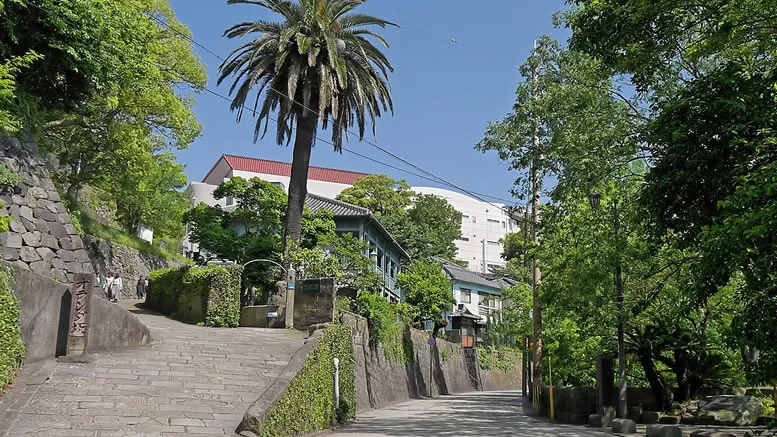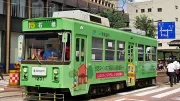Tucked into the hillside above Nagasaki’s harbour, the Dutch Slope (Oranda-zaka) offers a charming step back into Japan’s early interactions with the West. This slanted stone-paved street, lined with former Western residences, was once home to European merchants—particularly Dutch traders—during the Meiji period, when Japan reopened its doors to the world. The area is known for its picturesque stairways, stone walls, and a tranquil atmosphere that feels worlds apart from the bustling port city below.

While the name refers to the Dutch, it was actually home to various Westerners, including British and American residents. The influence can still be seen in the preserved Western-style houses dotted along the slope, some of which are open to the public or have been repurposed as museums and galleries. Walking the slope offers a fascinating contrast to traditional Japanese architecture and tells a story of cultural blending and modernisation.
What Else Is Nearby?
Nagasaki Chinatown
Just a short walk from the Dutch Slope is Shinchi Chinatown, one of the oldest in Japan. With roots going back centuries, it’s a lively spot for sampling local Chinese-influenced cuisine, including Champon and Sara Udon, which originated in Nagasaki. The area is particularly festive during Chinese New Year and lantern festivals.
Confucius Shrine
A few blocks east of the slope lies the Confucius Shrine (Kōshi-byō), one of the few shrines of its kind built outside of China. Funded by the local Chinese community in the late 19th century, it features elegant Chinese architecture and houses a museum of cultural artifacts on the grounds. It’s an unexpected and vibrant stop that complements the region’s diverse cultural layers.
Dejima
To the west, just across the tram line, is Dejima, the artificial island that once served as the Dutch trading post during Japan’s period of national seclusion (Edo era). Today, it’s been partially restored as an open-air museum, allowing visitors to walk through reconstructed merchant houses, warehouses, and offices that detail the once-closed nation’s only window to the outside world.
Access and Getting There
The Dutch Slope is located in central Nagasaki, and access is straightforward via public transport:
From Nagasaki Station, take a tram bound for Sofukuji Temple and get off at Shinchi Chinatown or Ourakaigandori stations. From there, it’s a 5–10 minute walk uphill.
If you’re already exploring Chinatown or Dejima, the slope is within easy walking distance and can be naturally included in a city stroll.
Visitors coming by car should note that the slope itself is pedestrian-only, but there are parking options nearby in the city.
Visiting the Dutch Slope isn’t just about admiring its architecture—it’s about discovering the multicultural threads that have shaped Nagasaki for centuries. The area is compact but dense with history, making it a perfect addition to a self-guided walking tour of the city. Whether you’re a history buff, architecture fan, or just someone who enjoys charming streets and good food, the Dutch Slope and its surroundings are well worth the detour.




